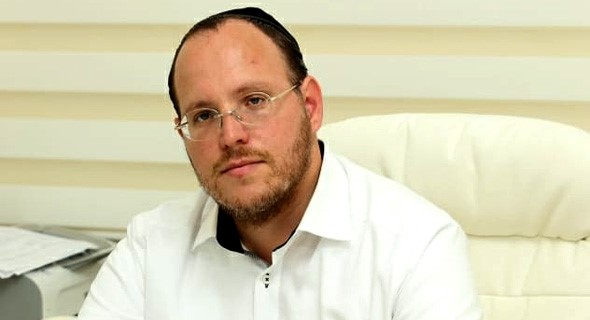Dov Cohen, calcalist.co.il.
With the countdown to the end of TAMA 38, the national master plan for strengthening and protecting buildings, it is already clear that its continuation will have to work in a slightly different format. Most of this is in neglected urban renewal rates in the periphery versus Gush Dan, which the Planning and Government Administration for Urban Renewal, they will have to pay attention to them.
At present, the economic equation that underlies urban renewal processes is based on the value of land and the viability of projects for real estate developers - an equation that creates huge gaps between demand areas for the northern and southern peripheries. Of course, with regard to the northern periphery, the issue is not just economic of the communities most at risk of earthquakes such as Safed and Beit Shean, located in the Syrian African fault zone.
The sad situation is well known to those who believe in housing planning in Israel. Yesterday, data from the Planning Administration were released, revealing the state's inability to promote urban renewal in the peripheral areas. According to the data, while some of the districts in Israel have bypassed the urban renewal goals set for them in the strategic housing plan, in the peripheral districts - led by the Northern District - the urban renewal is lagging far behind the goals, and with no economic horizon to achieve them.
The State of Tel Aviv
The strategic plan of the housing market, which is the first of its kind to outline Israel's housing needs in 2040, has set ambitious targets that 30% of all new housing units planned in Israel will come from urban renewal projects. The plan, drafted by the National Council for Economic and Planning Administration, has written to each district urban renewal goals tailored to its conditions, at a gradual pace as the years progress.
For example, the target set for Tel Aviv district by 2020 dictated a 40% rate of urban renewal housing units out of the total housing units planned for it. However, the district has already bypassed the target significantly, and today about 53% of all planned housing units - some 28,000 apartments - originate from urban renewal projects.
While in these districts the data is encouraging, for most other districts meeting goals seems a distant task. In the Central District, for example - which includes major cities such as Rishon Lezion, Petah Tikva, Ramle and Kfar Saba and its population of about 2.3 million, the proportion of new dwellings planned for urban renewal during these years is relatively low, reaching only 11.3% of all new dwellings planned. This compares with a target of 20%.
Similar rates of urban renewal have also been recorded in the Southern District of the Planning Administration, to which include Beersheba, Ashkelon, Ashdod, Eilat, Sderot and many regional councils. About 76,000 housing units were planned in this district during the years, but only about 8,500 originate from urban renewal projects - a rate of 11.1%.
Southern District Planner Tomer Guthalf said following the release of the data, "In the current economic equation, most cities in the South are unable to undertake urban regeneration projects. When this happens, it mainly occurs in the northern cities of the district, in parts that are part of the Tel Aviv metropolitan area. The goal is to work through urban condensation, which is to utilize vacant space within the cities, Ashkelon, Arad and Be'er Sheva. Bringing high quality new housing stock into the city increases land values, which can help renew other areas of the city. "
One apartment out of 50
The Planning Administration data further shows that the district with the most significant arrears is the Northern District, where the strategic plan has set a target of only 10%, but as of 2017–2018, the total number of dwellings planned for urban renewal constitutes only 2% of the total housing units. Designed in its territory. During this period, approximately 48,000 housing units were planned in the Northern District, of which only 1,100 were under urban renewal.
Yehuda Herzog, CEO of the Herzog Real Estate Group, which initiates and conducts urban renewal projects in the northern periphery, is not surprised: "There is no longer any room for doubt - something acute in the TAMA 38 just doesn't work. Cities in the north of the country hardly see a TAMA 38 project and certainly not an evacuation, and when trying to figure out why this is happening - they quickly realize that this is getting stuck in the municipalities. For them, the addition of housing units is just a burden, because they lack areas for public buildings.
 Yehuda Herzog. “Disputes between authorities and state can be resolved"
Yehuda Herzog. “Disputes between authorities and state can be resolved"
Indeed, in many cities such as Tiberias, where Herzog real estate operates, there is no land and can certainly be crowded with residential construction - but the city does not have enough infrastructure, schools and public institutions to serve the new residents. Here Herzog has a "simple solution", literally: “In projects being built today, more than 40% of the market value of the housing goes to state coffers, through such and other taxes. If only some of this money is diverted to the local authorities, I have no doubt that the local committees will convene much more frequently and discuss projects. It's all a question of how much the country will be prepared to come before the authorities.
Herzog points to another solution related to the exemption from the levy levies currently being enjoyed by urban renewal activists: "Once the municipalities allow a fee or levy for the improvement of any housing unit to be built as part of an urban renewal, there will be enough money for the surrounding infrastructure. In addition, the contractors will also receive more building rights. This will save all disputes between the authorities and the state, and the urban renewal will also reach the periphery. "



